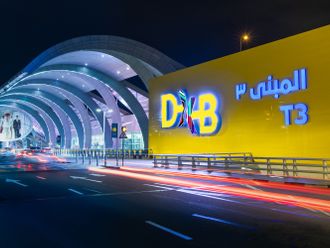Riyadh: Saudi Arabia's General Authority of Civil Aviation (Gaca) and Al Mal Investment Company (Al Mal) recently signed a Memorandum of Understanding (MoU) to build the Hail International Airport in the Prince Abdul Aziz Bin Musaed Economic City (Pabmec).
Located 720 kilometres north of Riyadh, the 30-billion Saudi riyal (Dh29.3-billion) Pabmec is envisaged as an integrated commerce and industry hub.
Al Mal, the investment arm of the M.A. Kharafi Group of Kuwait, is the main developer of the economic city. The signing ceremony was attended by Gaca president, Engineer Abdullah Rahimi, Saudi Arabian General Investment Authority (Sagia) governor Amr Al Dabbagh, and chairman of the board of directors of Al Mal, Lua Al Kharafi.
Speaking on the occasion, Rahimi said that the Gaca is striving to develop the infrastructure facilities in the aviation sector in line with the directives of King Abdullah Bin Abdul Aziz and Crown Prince Sultan Bin Abdul Aziz, who is also the deputy premier and minister of defence and aviation.
Industrial boost
Rahimi said that the new airport will be a big boost in making the economic city a global business and industrial centre that serves as a premier hub for transportation and logistics, mining, information technology, basic and traditional building materials, agricultural manufacturing, education and smart infrastructure.
"The airport will have all the advanced and high-tech facilities for the passengers and cargo. The project would consist of control tower, passenger terminal, main and branch runways, tarmac, building for ground-handling services, maintenance building, power generation and water plants, building for senior citizens, aviation fuel station, cargo terminal, roads and other infrastructure networks, building for fire safety equipment and medical clinics," he said.
Al Kharafi said the new airport would become a vital factor in accelerating the pace of the ongoing development works at the city, spreading over 156 million square metres. "This would further boost the goals of the city in spurring the growth of the economy, achieving balanced regional development besides creating more employment opportunities for young Saudi men and women," he added.
The economic city, which is expected to be completed by 2025, will offer a full range of commercial and community facilities with a mix of office, retail and entertainment activities as well as affordable residential neighbourhoods supported by local community facilities. Upon completion, it will provide 55,000 new jobs.












